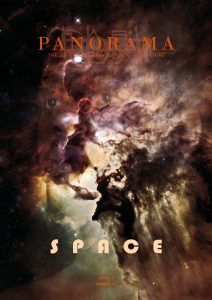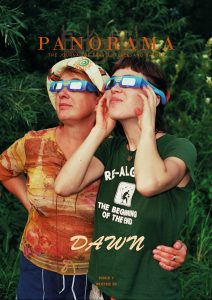Guilt is an opinionated dream crusher with better stalking skills than a student loan bill collector. It caught me one January evening as I sat on the park bench in San Miguel de Allende. Smiling, I watched a mariachi band serenade a middle-aged couple groping for a second chance at love.
Violins glided underneath a canopy of the trilling trumpet. The song must have been familiar because the woman joined in with recognition and abandon. Swaying, she swung her arms and twirled in circles. Her lover captured the moment on his tiny mobile phone screen. When the last note of the song faded, the woman clasped her hands, threw back her head and smiled. The band moved on, as if this kind of ordinary magic was commonplace. And maybe it was. Tourists from the United States reduced their understanding of Mexico to tacos and tequilas. But once they come here, once they experience the truth of Mexico—that realism is really a sort of magic—they return.
A voice slinked on the back of my neck and curved its way behind my ear. I recognised guilt’s slithering murmur. It pressed me against its cold heart and cooed:
‘You don’t deserve to be happy. You exchanged her life for yours. Remember when you told the doctors they could remove the machines? Remember when you placed your faith in science instead of God? Recuerdas mi amor?’
Great. Now my guilt was bilingual and spoke better Spanish than I did. Pulling my puffer vest tighter across my body, I shielded myself against the tremor of memory. Guilt snatched it back, however, and suddenly I was transported to a hospital room in New Jersey. I remembered my mother as she was then. Her once-famed beauty shrank and wrinkled into this other thing. It was now a vessel preparing for a new voyage, from one temporal plane to the next.
I met the eyes of Rev. John Coger across the hospital bed. He held my gaze. I imagined two months prior, he held my mother’s eyes across a hospice bed as her brother was dying of cancer. Three years before, he held mom’s gaze after dad succumbed to oesophageal cancer. Would Rev. Coger ever get tired of meeting our sorrowful eyes across a hospital bed or casket?
Calling Rev. Coger was the right thing to do because mom would have wanted him there. We belonged to the church and it belonged to us. That’s where my maternal grandparents met. New Hope Baptist Church in Philadelphia was founded nearly a century ago by a preaching family, a teaching family and a musical one. We were the musical family. Music fed us as much as The Word. We weren’t exactly holy rollers, though. A branch or two of the family tree may have dabbled in some herb and jazz. If God loves a repentant sinner, we were BFFs.
Beauty was mom’s religion. She was a light-skinned black woman whose Native American and white ancestry, it was said, bequeathed her with radiant skin. Her wavy hair was proclaimed ‘good’ because it overcame her African genes. Mom worshipped beauty in her daily practice of sitting at a worn, gold and glass vanity, applying black eyeliner, pink blush, and wine lipstick. Black and red lines grew squiggly over time as her body gave way to illness. When the straight lines curved, mom didn’t give up. She added Victoria’s Secret Bombshell perfume to her morning ritual. She patted it on her wrists and neck each morning to ward off sickness and death.
But cancer is a trickster. It slithered through the interlocking chain of Shangri-La peonies and vanilla orchid notes of the perfume. It pierced her brain tissue, severed her breast, and devoured her stomach in three successive bouts over the past twenty years. What remained of mom’s beauty was a pecan-shell of a woman against scratchy, white sheets. Squeezing Rev. Coger’s hand, I stared at the doctor as she explained there was nothing else they could do. Mom would never wake from the coma. Machines could perform her bodily functions for the two or three months she had left to live, or…
The doctor’s suggestion trailed into the sick, thick air.
Guilt was conceived and birthed in the doctor’s suggestion. Mom’s illnesses increased in severity after Dad’s death. I pretended we could live our lives the way we always did because I couldn’t face the truth. I visited mom more often; but I ignored the signs—the growing colony of prescription pill bottles on the living room table, her slurred speech, the contracting of her muscles and bone.
I doubled-down on the myth of her eternal life because I didn’t want to change mine. If I ignored the rising frequency of seizures and hospital stays, I would not have to decide whether to ‘put her in a home’ or whether she could live with or near me. If I pretended she would recover from kidney dialysis, I wouldn’t have to make end-of-life decisions alone. At the age of 43, my life was just getting started. I was not married. I did not have children. I engineered my livelihood so I wouldn’t have to show up in an office every or any day. I could finally move abroad, have adventures, dance in ill-fated love affairs, and write about it. I could do exactly as I pleased, except my mother was dying.
In the hospital room, I knew I couldn’t escape the inevitable. I surrendered to it. Mom was going to die and I would experience as much of it as I could with her. Drawing upon the yogic breathing I learned over the years, I taught myself to breathe when she did. Synchronistic breathing calmed me and granted the illusion that if I were present now, it would make up for the times I was too busy to answer her phone call, didn’t fly up for the holidays or waited until after I finished a client’s report to order mom’s groceries online. Tropicana orange juice, a box of Entenmann’s doughnuts, a quarter-pound of white American cheese, pineapple soda…
On the park bench in San Miguel de Allende, I caught my tattered breath between the inhale and exhale. It was getting chilly. I wanted to warm up, but wasn’t ready to leave the park and go back to my hotel. I headed toward La Parroquia de San Miguel Arcángel, the parish church. Small stabs of heat rose from the street lamps and from a cluster of candles on the steps outside the church. Guilt continued its assault with my every step.
‘Now you remember. I will never let you forget. Recuerdas.’
Seeking relief from the persistent, now bilingual guilt inside a church sanctuary seemed a bit of a cliché. What did I expect to find here? I wasn’t sure what I believed any more. For the past decade, I’d been cheating on Jesus with the Buddha. I counted at least a dozen books on Buddhism in my online library and kept a statute of the Buddha on the altar in my closet. I cleaved, however, to the Jesus of my childhood during my mother’s illness and death because it was easier to nod my head and make affirmative noises about the blood of the lamb of God than saying, ‘This shit sounds crazy to me. Can we just resurrect my mother now?’
Flipping through an outdated brochure in the parish sanctuary and learning about the church’s history absolved me from concerns about being a little too precious with this whole redemption-in-church-after-mom-died thing. I could focus on the present instead of lingering in the past. Bilingual guilt be damned.
La Parroquia de San Miguel Arcángel was a symbol of self-invention in a city of reinvention. Among other things, San Miguel de Allende was the place where American ex-pats of a certain vintage went to reinvent themselves. Behind the estimated 2,000 ochre, blood orange and bright yellow doors said to be in the town’s historic centre alone, more than one of these doors holds someone like Janice from Accounting. Janice retired, moved to San Miguel three years ago and was now Ione, a ‘well-known jewellery designer’. If Janice/Ione can make a living from refashioning door-knobs into Day of the Dead skull jewellery, La Parroquia can rescue itself from the architectural equivalent of dad jeans and glitter-glue itself into a better, more Gothic-inspired life.
Founded in 1742 by Luis Felipe Neri, La Parroquia was renovated by Zeferino Gutiérrez more than a century later. Gutiérrez hustled harder than the last-chosen player on the team. He convinced the entire town that he, a local bricklayer, had the requisite architectural skills to replace the parish’s colonial Mexican façade with a Gothic exterior based on some postcards of great European cathedrals. Or maybe the people of San Miguel de Allende underwent a mass delusion. Much like Hollywood, San Miguel coaxes you into believing that if you can negotiate its narrow cobblestone streets without twisting an ankle, you can be a famous actress, jewellery designer or Gothic cathedral.
In 1880, the façade of La Parroquia underwent a makeover. She was tricked out in the latest Gothic spires that stretched toward the heavens, a frieze on the first level, and a second-level choir window framed in pink sandstone. Inside was pure Mexican fiesta. The church retained her original 17th century layout. But unlike her elegant, European step-sisters, Notre Dame and Westminster Abbey, La Parroquia left the house with one too many accessories. She was a peacock of arches, pilasters, and floral motifs. La Parroquia was the Kim Kardashian of cathedrals, taking selfies in all her festooned glory. Frescoes crawled in nearly in every corner. The crucified Christ and the Virgin Mary perched on opposite sides of the sanctuary.
I sat there in La Parroquia and waited for a pink permission slip from God to drift down from one of the Gothic spires. In bold cursive, the permission slip would say, ‘You are hereby released from any guilt for daring to live a beautiful life while your mother cannot. Peace and blessings.’ Not understanding how truly hard-headed I was, God tried to speak to me through people. After mom’s funeral, Rev. Coger said her death set me free. And just in case I didn’t hear God’s message twice the first time, a woman who didn’t know my mother but sang in the church choir ran up to me after the service and said mom told her to tell me I can be free. I appreciated the attempts, but I need things in writing. Besides, the math didn’t add up. Mom’s life for mine was too high a price to pay. Couldn’t I just buy my freedom with an entire Michael Jackson album collection on vinyl and some Tic Tacs? Why was her death the only option?
I should be used to this reasoning by now. The entire Southern Baptist religious tradition into which I was born and marinated was predicated upon it. Eternal life and God’s grace come at the cost of Jesus’s life. It doesn’t seem fair. If I were in the Garden of Gethsemane as Jesus was summoning the courage to be crucified, I would have run past the grove of hollow, olive trees screaming ‘Jesus, don’t do it! We sinners aren’t worth it!’
Sweating and panting because I don’t run much, I would have hunched next to the praying Jesus, rested my slick hands on my knees and said between gasps of air, ‘Jesus, get married. That nice Mary Magdalene seems to like you. Have children. There will be a famous book and a dreadful movie called The Da Vinci Code about it. God will have mercy on Tom Hanks’s hair piece. Please don’t sacrifice your life. Your living could spare us that awful The Passion of the Christ with Mel Gibson. That would help humanity immensely.’
Jesus would have looked at me with pity because he knew I needed to exercise more and because my faith was smaller than a mustard seed. That’s presuming I would have made it to interrupt Jesus in the first place. Maybe God would have smitten me before I stepped into the Garden of Gethsemane. Someone put the disciples on lock so Jesus could get a minute to himself. Nevertheless, if I made it to Jesus, I would have told him it was barbaric to sacrifice one life for another. I would have told Jesus that if it were God’s will for me to be a free, black woman in the world, my freedom should come because I earned it, not because my mother died.
I closed my eyes and let the tears come. La Parroquia could handle it. Her sanctuary withstood the clomping footsteps of children who pushed past black-clad widows. The wooden pews withstood the heavy, denim-covered bottoms of tourists seeking shelter. She welcomed the Hail Marys of all who sought the church’s protection. Life and death were an eternal party here. And in case I didn’t get that last point, strains from the mariachi band drifted in from the park.
God’s permission slip never came that evening or at least in the form I expected. Rising from the pew, I crossed myself and left the church. The night air cupped my face like mom’s hands. The town square looked like the morning after a party in which everyone had a good time, but no one remembered exactly what happened. The mariachis disbanded. A sweat stain spread across the armpit of the starched shirt of one of the mariachi singers. Another mariachi was texting. Maybe it was his wife, asking what his share of the band’s take would be. Or maybe it was his lover, wondering when he was coming over. The mariachi smiled and shoved the cell phone down, illuminated, into his pants pocket.
A group of American tourists walked behind me. Speaking in flat accents, they discussed politics and the price of things. Their lives were measured in costs. Was the exchange rate now 16 or 17 pesos per dollar? How much did the taxi cost? How much did the food at one of the terrace restaurants on the square cost?
I lived like that too when I lived in the United States. I measured my worthiness by how much something cost me. How much emotional labour had I put into my latest attempt at becoming someone’s wife? How much did my mother’s death cost me—not in airplane miles, but in all the seconds I missed telling her how much I loved her?
Guilt would stalk and invoice me for the rest of my life unless I wrote my own permission slip. Standing on the steps of La Parroquia, I wasn’t ready to grab a sheet of paper from the cosmic pink pad. But someday I would be. Maybe I would reach for the pad and pen when I understood my mother had already counted the cost of her life and had given me the change. I would start writing when I realised that it was more than enough.











